Devon Island (Canada): Unveiling the Arctic’s Hidden Paradise
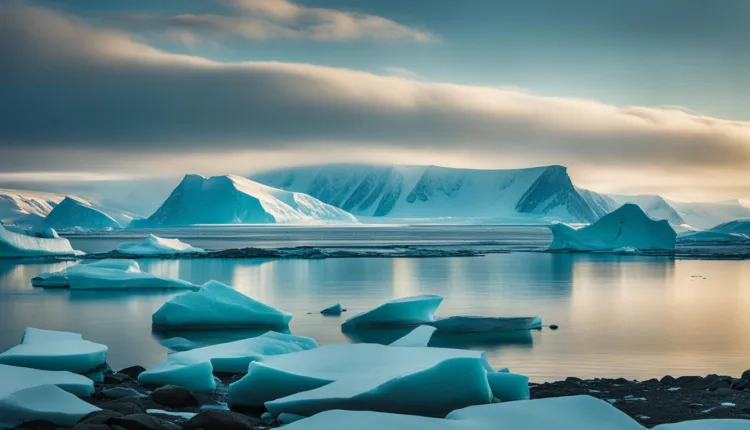
As an avid traveler and adventurous soul, I have always been drawn to the beauty and mysteries of the Canadian Arctic. One place that has captivated my imagination is Devon Island, the largest uninhabited island in the world. Located in the High Arctic, this hidden paradise offers a truly unique and awe-inspiring experience for those willing to venture into its untouched wilderness.
Devon Island’s rugged and breathtaking Arctic landscape is a sight to behold. Picture vast expanses of untouched tundra, majestic mountains, and sparkling glaciers that stretch as far as the eye can see. Its remote location adds to its allure, offering a sense of isolation and tranquility that is hard to find elsewhere.
But Devon Island is not just a scenic wonderland. It holds a rich historical significance. Geological research and Mars analog studies have been conducted here, making use of its unique environment to study the similarities between the island’s polar desert and the Red Planet. It has also been part of the route taken by Sir John Franklin’s ill-fated expedition, adding to its mystique and intrigue.
So, whether you’re an adventurer seeking an authentic Arctic experience or a history enthusiast intrigued by the mysteries of Franklin’s lost expedition, Devon Island is a destination that should be on your radar. Get ready to uncover the secrets of this hidden paradise and immerse yourself in its untouched wilderness.
Key Takeaways:
- Devon Island is the largest uninhabited island in the world, located in the Canadian Arctic.
- Its untouched wilderness and stunning Arctic landscape make it a hidden paradise waiting to be explored.
- Devon Island has played a crucial role in geological research and Mars analog studies.
- It was part of the route taken by Sir John Franklin’s ill-fated expedition.
- Whether you’re interested in nature or history, Devon Island offers a unique and unforgettable experience.
The Historical Significance of Devon Island
Devon Island holds immense historical significance in the realms of geological research and Mars analog studies. Scientists and researchers have long been captivated by the island’s unique environment, which closely resembles that of the Red Planet. By studying Devon Island’s polar desert, scientists have gained valuable insights into the geological processes and conditions that may exist on Mars.
Devon Island’s polar desert provides a perfect analog for studying the conditions that may exist on Mars. Its barren landscape, extreme temperatures, and harsh environment make it an ideal testing ground for simulating Martian missions and conducting experiments.
The island’s geological features, such as its impact craters, permafrost, and ancient rock formations, offer fascinating clues about the planet’s history and evolution. Researchers have used Devon Island as a training ground for astronauts and for testing technologies that could be used in future space missions. The valuable data gathered from these scientific endeavors not only deepens our understanding of Mars but also contributes to advancements in space exploration.
Moreover, Devon Island’s historical significance extends beyond scientific research. The island’s role in the ill-fated Franklin’s lost expedition, as part of the route taken by Sir John Franklin, adds a layer of intrigue and mystery to its narrative. The convergence of scientific exploration and historical exploration makes Devon Island a truly remarkable destination for those seeking to delve into the secrets of our planet and beyond.
Exploring the Geological Similarities
One of the most compelling aspects of Devon Island is its resemblance to the Martian landscape. The polar desert environment, characterized by vast stretches of barren terrain, permafrost, and extreme temperatures, mirrors the conditions found on Mars. This similarity has attracted researchers and scientists from around the world, who view Devon Island as a natural laboratory where they can study the geological processes and features that may also exist on Mars.
Devon Island’s impact craters, ancient rock formations, and permafrost provide valuable insights into the planet’s past, helping scientists piece together the puzzle of its geological history. By studying these features and conducting experiments in this unique environment, researchers can simulate the conditions that would be encountered during future Mars missions.
From testing technologies and equipment to training astronauts, Devon Island serves as a crucial testing ground for space exploration endeavors. The knowledge gained from these scientific endeavors not only advances our understanding of Mars but also contributes to the broader field of planetary science.
Unraveling the Mysteries of Franklin’s Lost Expedition
While Devon Island is renowned for its geological research, it also holds a significant place in history as part of the route taken by Sir John Franklin’s ill-fated expedition. Franklin, an experienced explorer, led an ambitious journey to traverse the Northwest Passage and record magnetic data in the Arctic. Unfortunately, both his ships, HMS Erebus and HMS Terror, became icebound near King William Island in present-day Nunavut, Canada.
The subsequent search efforts and discoveries related to Franklin’s lost expedition have captivated the world and fueled ongoing fascination with the Arctic. The artifacts found and scientific studies conducted shed light on the challenges faced by the crew, including hypothermia, starvation, and the harsh conditions of the Arctic environment.
Today, as we explore the mysteries of Devon Island’s geological past and its historical significance in the context of Franklin’s expedition, it serves as a reminder of the intrepid spirit of exploration and the profound impact that the Arctic has had on our understanding of the world and beyond.
The Tragic Fate of Sir John Franklin’s Northwest Passage Expedition
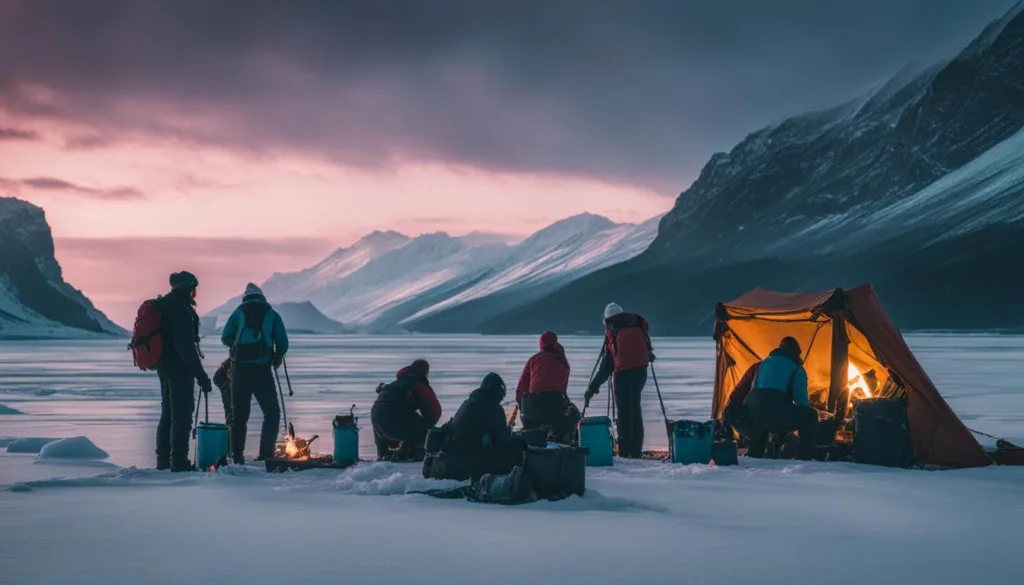
Exploring the treacherous Northwest Passage was a daring endeavor that captivated the imaginations of many intrepid explorers, including Sir John Franklin. In 1845, Franklin set sail on his ill-fated expedition aboard HMS Erebus and HMS Terror, aiming to traverse the infamous passage and further scientific knowledge. Little did he know that his journey would become one of the most harrowing tales of Arctic exploration history.
The expedition faced numerous challenges as they journeyed through the icy waters of the Canadian Arctic. The ships became icebound near King William Island in what is now Nunavut, a remote and harsh region known for its extreme weather conditions. Stranded and isolated from the outside world, the crew faced a relentless battle against the elements and dwindling resources.
The brave crew of the Franklin expedition endured unimaginable hardships in their quest to chart the Northwest Passage. Their story serves as a haunting reminder of the dangers and uncertainties that come with Arctic exploration.
Despite extensive search efforts, the fate of Franklin and his crew remained a mystery for almost 170 years. It wasn’t until recently that the wrecks of HMS Erebus and HMS Terror were discovered near Devon Island. Parks Canada and the Arctic Research Foundation have since conducted research and dive expeditions at the sites, shedding light on the tragic final days of the expedition.
Table: Key facts about Franklin’s lost expedition
| Ships | Personnel | Location | Outcome |
|---|---|---|---|
| HMS Erebus | Sir John Franklin | Icebound near King William Island | Tragically lost |
| HMS Terror | 128 crew members | Nunavut, Canadian Arctic | No survivors |
The story of Franklin’s lost expedition serves as a poignant reminder of the risks and sacrifices made by early Arctic explorers. Today, as we reflect on their journey, we honor their memory and the enduring spirit of exploration in the face of adversity.
The Mystery and Search for Franklin’s Expedition
As the news of Sir John Franklin’s lost expedition spread, numerous search efforts were launched to find the missing explorers. The quest to unravel the mystery surrounding their disappearance became a focal point of Arctic exploration in the mid-19th century. The search for Franklin and his crew yielded artifacts and evidence that shed light on the challenges they faced in the harsh Arctic environment.
Scientific studies conducted in the aftermath of the expedition suggested that the crew battled hypothermia, starvation, and even resorted to cannibalism in a desperate struggle for survival. The brutal conditions of the Arctic, with its freezing temperatures, limited resources, and treacherous ice, posed formidable challenges that ultimately led to the tragic fate of Franklin and his men.
I remember reading an account from one of the search parties that discovered relics from Franklin’s expedition. The author described the desolate landscape and the haunting presence of the abandoned ships, frozen in time. It was a stark reminder of the harsh realities faced by these brave explorers in their pursuit of discovery.
The Relics of Franklin’s Expedition
The artifacts recovered from the search expeditions provide valuable insights into the experiences of the Franklin crew. Personal belongings, navigational instruments, and even bone fragments were discovered, painting a vivid picture of their struggles. The artifacts served as a testament to the relentless determination and unwavering spirit of exploration that characterized Franklin’s ill-fated voyage.
| Artifacts | Description |
|---|---|
| Personal Belongings | Items such as clothing, books, and personal effects of the crew were found, offering glimpses into their lives on board. |
| Navigational Instruments | Tools used for mapping and navigation, such as sextants and compasses, provided insights into the expedition’s scientific objectives. |
| Bone Fragments | The discovery of bones indicated the challenging conditions faced by the crew, including signs of malnutrition and cannibalism. |
The relics of Franklin’s expedition not only serve as a reminder of the hardships endured by the crew but also as a testament to their contribution to scientific exploration and geographic knowledge of the Canadian Arctic.
The Search Continues
Although the fate of Franklin and his crew has been uncovered to some extent, the search for answers continues. Expeditions and scientific studies in the Arctic are ongoing, driven by a desire to learn more about this historic voyage and the enduring mysteries surrounding it. The search for Sir John Franklin has become an integral part of Arctic history, fueling the spirit of exploration and discovery in the quest to uncover the secrets of the frozen wilderness.
Exploration and Discoveries
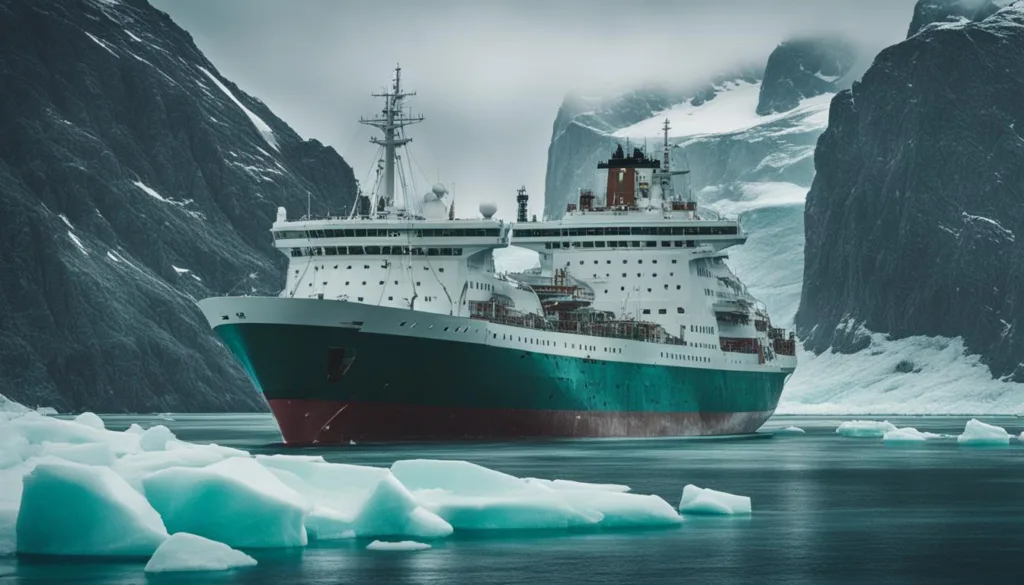
As the search for Franklin’s lost expedition intensified, it led to significant exploration and valuable discoveries in the Canadian Arctic. One notable achievement was made by Robert McClure’s expedition, which found an ice-bound route that connected the Atlantic and Pacific Oceans, known as the Northwest Passage. This groundbreaking discovery opened up new possibilities for maritime navigation and trade routes, creating opportunities for future explorers and adventurers.
The Northwest Passage has long been a coveted route for sailors seeking a quicker way to reach Asia from Europe. Many early explorers attempted to locate this elusive passage, but it was only through the tragic events surrounding Franklin’s expedition that the route was ultimately revealed. McClure’s discovery not only showcased the geographical feat of connecting the Atlantic and Pacific Oceans, but it also contributed to the exploration and expansion of maritime trade in the region.
Table: Northwest Passage Exploration
| Explorer | Year | Contribution |
|---|---|---|
| Martin Frobisher | 1576 | Explored the eastern entrance of the Northwest Passage |
| Henry Hudson | 1610 | Explored the Hudson Bay and discovered Jan Mayen Island |
| William Baffin | 1616 | Mapped the western entrance of the Northwest Passage |
| Robert McClure | 1850 | Discovered the ice-bound route connecting the Atlantic and Pacific Oceans |
The exploration of the Northwest Passage not only satisfied the curiosity of explorers but also had significant geopolitical and economic implications. It offered a potential shorter route for international trade, which could reduce travel time and costs. It also played a role in shaping the fur trade industry and fostering relationships between European nations and Indigenous communities of the Canadian Arctic.
Today, the Northwest Passage continues to be of great interest as climate change affects the Arctic region, leading to reduced sea ice and increased accessibility. As the passage becomes more navigable, it presents new opportunities for trade, tourism, and scientific research in the high Arctic, further contributing to the ongoing exploration and discoveries in this remote and captivating part of the world.
Wreck of Erebus and Terror
As the search for Sir John Franklin’s lost expedition intensified, the wrecks of HMS Erebus and HMS Terror were discovered near the shores of Devon Island. This significant finding has captured the attention of organizations like Parks Canada and the Arctic Research Foundation, leading to extensive research and dive expeditions at the sites. Today, the wrecks are recognized and protected as a combined National Historic Site.
The exploration of the wrecks has provided invaluable insights into the ill-fated expedition and the challenges faced by Franklin and his crew. Through meticulous examination of the artifacts and remains, experts have pieced together the story of their desperate struggle in the unforgiving Arctic environment.
Parks Canada and the Arctic Research Foundation have worked tirelessly to document, preserve, and share the history of the wrecks. Their efforts have shed light on the brave explorers who ventured into the unknown, and the tragic events that unfolded on their ill-fated journey. Through education and outreach programs, these organizations aim to ensure that the legacy of Franklin’s expedition is remembered and understood by future generations.
| Organization | Role |
|---|---|
| Parks Canada | Preserves and protects the wrecks as a National Historic Site |
| Arctic Research Foundation | Conducts research and dive expeditions at the wrecks |
“The discovery of the wrecks of HMS Erebus and HMS Terror near Devon Island is a profound testament to the determination and sacrifice of the explorers who sought to unlock the mysteries of the Arctic. These wrecks are not just historical artifacts; they are the physical embodiments of the incredible human spirit and the enduring pursuit of knowledge.” – Olivia Grace, Travel Advisor
European Exploration of the Arctic
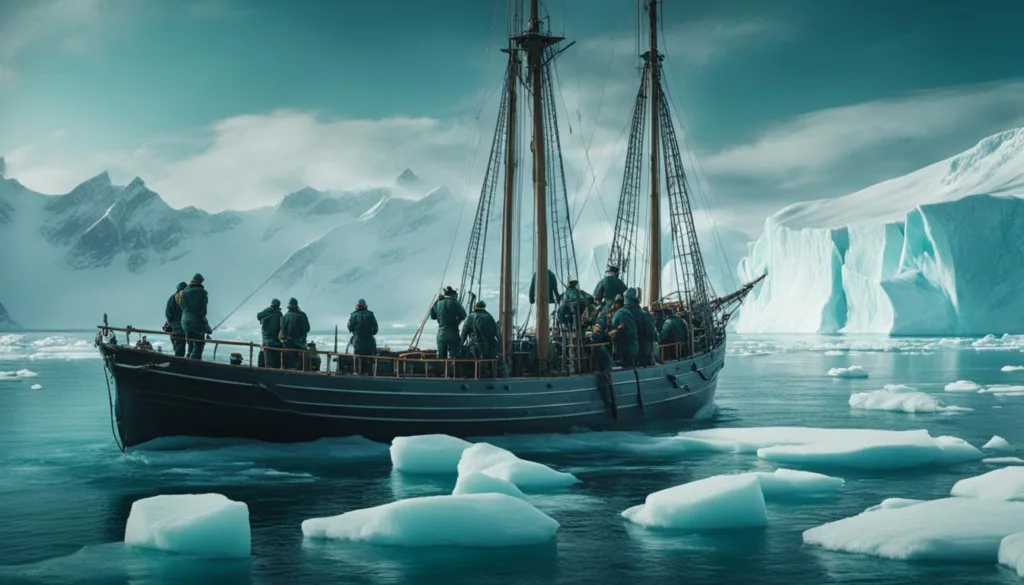
When it comes to the exploration of the Arctic, it is often overlooked that the search for a western shortcut from Europe to Asia played a significant role in early expeditions. The desire to find a faster route to the riches of the East led to numerous exploratory endeavors, including those by Portuguese and Spanish explorers in the 15th century.
Portuguese Explorers
Portuguese explorers such as Bartolomeu Dias and Vasco da Gama were among the first to venture into the uncharted waters of the Atlantic Ocean. Their expeditions aimed to find a sea route to Asia, bypassing the treacherous overland Silk Road. Although they focused primarily on the African coast, their explorations paved the way for future Arctic endeavors.
Spanish Explorers
Meanwhile, Spanish explorers like Christopher Columbus and Ferdinand Magellan set their sights on the Western Hemisphere, hoping to find a new, western route to Asia. While their voyages did not directly lead to Arctic exploration, they expanded knowledge of the Western Hemisphere and sparked further curiosity about the unexplored northern regions.
Although the search for a western shortcut ultimately shifted towards the Arctic, the early explorations by Portuguese and Spanish adventurers laid the foundation for future European ambitions in the icy northern waters.
| Explorer | Nationality | Notable Expeditions |
|---|---|---|
| Bartolomeu Dias | Portuguese | Explored the southern tip of Africa, opening the way to Indian Ocean trade routes |
| Vasco da Gama | Portuguese | First European to reach India by sea, establishing direct maritime trade links |
| Christopher Columbus | Spanish | Completed four transatlantic voyages, exploring the Caribbean and Central and South America |
| Ferdinand Magellan | Spanish | First circumnavigation of the globe, demonstrating the Earth’s spherical shape |
Explorers of North America
Throughout the 16th and 17th centuries, several brave explorers embarked on daring journeys to uncover the mysteries of North America. These intrepid adventurers, such as Martin Frobisher, Henry Hudson, and William Baffin, made significant geographic discoveries that shaped our understanding of the region. Let’s take a closer look at their expeditions and the contributions they made.
Martin Frobisher
Martin Frobisher, an English navigator and privateer, embarked on three voyages to the Arctic in search of the elusive Northwest Passage. In 1576, during his first expedition, Frobisher reached the bay now bearing his name – Frobisher Bay – located in present-day Canada’s Nunavut territory. Although he didn’t find the Northwest Passage, his voyages significantly increased knowledge of the Canadian coastlines and adjacent Arctic seas.
Henry Hudson
Henry Hudson, an English sea explorer, is best known for his attempts to find a northern route to Asia, known as the Northwest Passage. In 1609, Hudson set sail on his ship, the Half Moon, and explored what is now known as the Hudson River in present-day New York. He also ventured into the Hudson Bay in 1610, which bears his name. While his search for the Northwest Passage was unsuccessful, Hudson’s expeditions provided valuable geographic information about North America.
William Baffin
William Baffin, an English navigator and explorer, embarked on several voyages in the Arctic region during the early 17th century. He explored the waters around Greenland, Baffin Bay, and the Hudson Bay, discovering new islands and mapping previously unknown coastlines. Baffin’s meticulous charting of the region’s geography greatly contributed to our understanding of the North American Arctic.
| Explorer | Significant Contributions |
|---|---|
| Martin Frobisher | Explored Frobisher Bay, increased knowledge of Canadian coastlines and Arctic seas |
| Henry Hudson | Explored the Hudson River and Hudson Bay, provided valuable geographic information |
| William Baffin | Explored Greenland, Baffin Bay, and Hudson Bay, mapped new islands and coastlines |
These brave explorers of North America paved the way for future expeditions and expanded our knowledge of the region. Their voyages inspired generations of adventurers and contributed to our understanding of the Arctic and its surrounding areas.
Sir John Barrow and the Exploration of the Northwest Passage
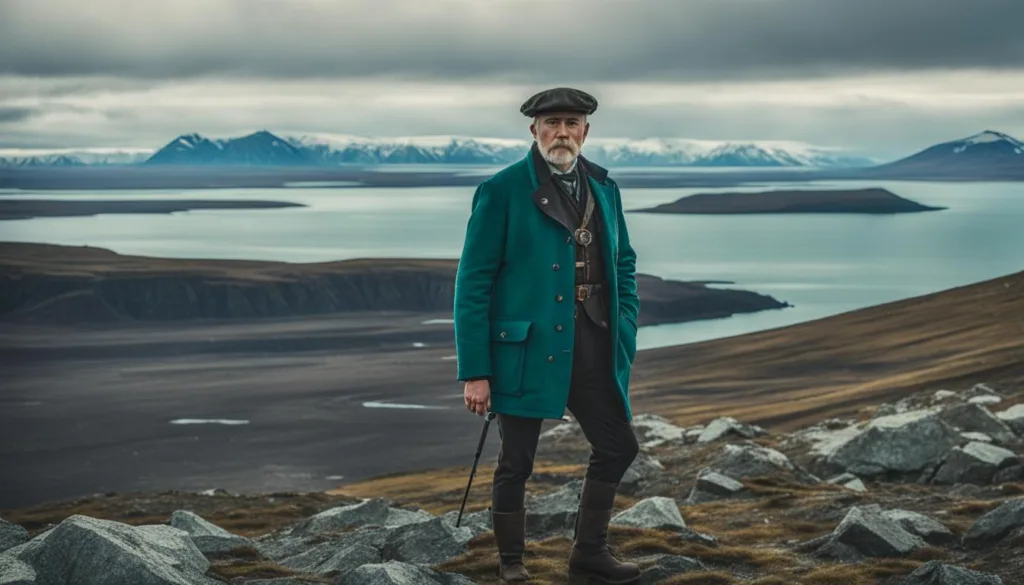
As an avid traveler and admirer of historical exploration, I cannot help but be captivated by the remarkable stories of those who ventured into the unknown in search of new routes and discoveries. One such individual who played a pivotal role in promoting exploration of the Northwest Passage is Sir John Barrow. A prominent figure in the Royal Navy during the 19th century, Barrow dedicated his life to advancing scientific knowledge and expanding the boundaries of human exploration.
Barrow’s unwavering passion for discovery led him to organize a series of expeditions, with the ultimate goal of navigating the elusive Northwest Passage. He understood the potential significance of finding a shorter route between Europe and Asia, and he believed that the Arctic held the key to unlocking this trade route. Through his tireless efforts, Barrow inspired and supported explorers such as John Ross, David Buchan, and William Edward Parry, who ventured into the treacherous Arctic waters in search of the fabled passage.
In addition to his role in organizing expeditions, Barrow also made significant contributions to our understanding of the Arctic through his extensive writings. His books, such as “A Chronological History of Voyages into the Arctic Regions”, provided invaluable accounts of previous explorations and served as a source of inspiration for future generations of adventurers. Barrow’s dedication to the exploration of the Northwest Passage and his commitment to expanding geographic knowledge have left an indelible mark on the history of exploration.
The Legacy of Sir John Barrow
Sir John Barrow’s influence and legacy extend far beyond his lifetime. His tireless efforts to promote Arctic exploration and his unwavering belief in the potential of the Northwest Passage paved the way for future adventurers to follow in his footsteps. Thanks to his vision and determination, we now have a greater understanding of the Arctic region and its significance in the broader context of global exploration. Barrow’s legacy serves as a reminder of the power of human curiosity and our ability to push the boundaries of what is known.
In conclusion, Sir John Barrow’s contributions to the exploration of the Northwest Passage and the advancement of geographic knowledge are immeasurable. His unwavering commitment to discovery, his support of expeditions, and his extensive writings have left a lasting legacy that continues to inspire explorers and adventurers to this day. As we reflect on the achievements of Barrow and his contemporaries, we are reminded of the importance of curiosity, perseverance, and the human spirit of exploration.
Preparations for Franklin’s Expedition
Before embarking on their fateful journey, preparations for Franklin’s expedition on Devon Island were meticulous and extensive. The two ships chosen for the expedition, HMS Erebus and HMS Terror, underwent significant modifications and upgrades to ensure their suitability for the harsh polar conditions. These modifications included the installation of steam engines, reinforced bows, and advanced technology to enhance the crew’s comfort and safety.
The ships were stocked with ample provisions to sustain the crew during their arduous journey. Supplies included preserved food, such as salted meat and dried fruits, as well as flour, coffee, and tea. Additionally, the crew had access to medical provisions, including medicines, bandages, and surgical instruments, to address any health issues that may arise during the expedition.
The personnel onboard the ships consisted of a diverse group of individuals from different regions of the United Kingdom. The crew included English, Irish, Welsh, and Scottish members, all chosen for their expertise in various fields, such as navigation, meteorology, and scientific research. Each member played a vital role in the success of the expedition and contributed their unique skills and knowledge to the mission.
Overall, the preparations for Franklin’s expedition on Devon Island were comprehensive and reflected the determination to ensure the crew’s safety and the success of the mission. With well-equipped ships, ample provisions, and a skilled and diverse crew, the stage was set for the explorers to venture into the unknown Arctic wilderness.
| Ships | Provisions | Personnel |
|---|---|---|
| HMS Erebus | Preserved food, medical supplies | English, Irish, Welsh, and Scottish members |
| HMS Terror | Flour, coffee, tea | Navigation, meteorology, scientific research experts |
The Command Structure of Franklin’s Ill-Fated Expedition
When it comes to the command structure of Sir John Franklin’s ill-fated expedition, two key figures stand out: Francis Crozier and James Fitzjames. As an experienced Arctic explorer, Crozier played a crucial role as the executive officer, bringing valuable knowledge and expertise to the expedition. Fitzjames, on the other hand, was appointed as the second-in-command of HMS Erebus, the flagship of the mission.
Francis Crozier, a seasoned sailor with extensive polar experience, was a trusted and respected figure among his peers. His years of exploration in the Arctic, including the previous attempt to navigate the Northwest Passage, made him an ideal candidate for the role of executive officer. Crozier’s leadership skills and intimate knowledge of the harsh Arctic environment were highly valued by Franklin and his crew.
James Fitzjames, known for his charisma and leadership abilities, was chosen as the second-in-command of HMS Erebus. Fitzjames’s role involved assisting Crozier in the day-to-day operations of the ship and supporting Franklin in executing the expedition’s objectives. His presence provided a balance of experience and enthusiasm, contributing to the overall command structure of the mission.
The Dynamic Pair
“Crozier and Fitzjames formed a dynamic pair, complementing each other’s strengths and working closely to ensure the smooth operation of the expedition. Their combined knowledge, skills, and determination were vital in navigating the treacherous Arctic waters and facing the challenges that lay ahead.”
Together, Crozier and Fitzjames played pivotal roles in the command structure of Franklin’s expedition. Their leadership, expertise, and ability to adapt to the ever-changing Arctic conditions were essential for the safety and success of the crew. However, despite their best efforts, the journey would ultimately end in tragedy, leaving behind a legacy of exploration and a cautionary tale of the unforgiving Arctic environment.
Table: Command Structure
| Position | Name |
|---|---|
| Commanding Officer | Sir John Franklin |
| Executive Officer | Francis Crozier |
| Second-in-Command (HMS Erebus) | James Fitzjames |
Challenges and Dangers
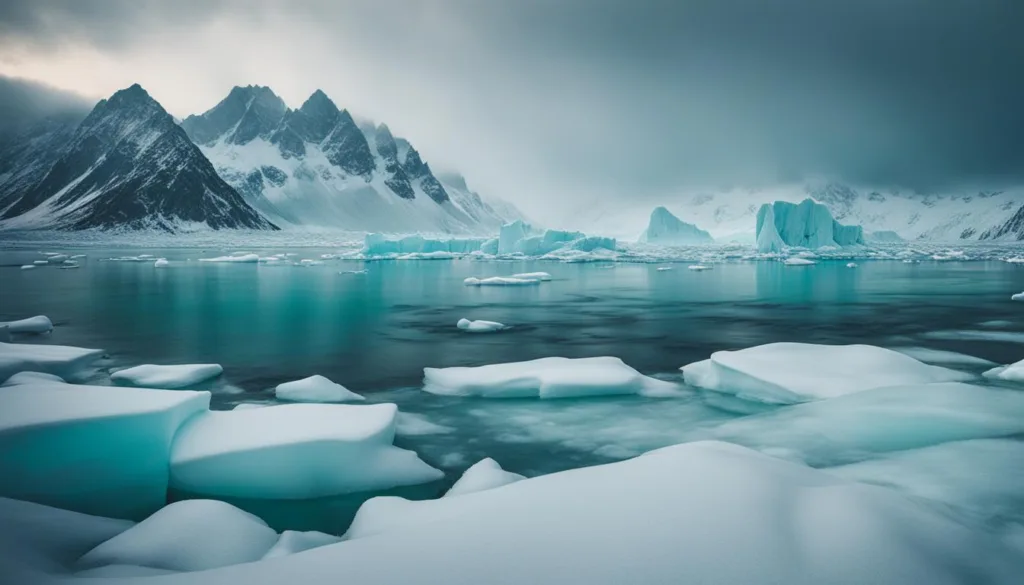
The extreme Arctic environment posed significant challenges and dangers for Franklin’s expedition. The ships, HMS Erebus and HMS Terror, became icebound in the treacherous waters, trapping the crew in an unforgiving and hostile environment. Freezing temperatures, limited resources, and isolation made survival a constant struggle.
The crew faced the constant threat of hypothermia as they battled the icy conditions. With temperatures often dropping below freezing, the risk of frostbite and cold-related injuries was a constant concern. The harsh climate of the Arctic also made it difficult to procure food, forcing the crew to ration their supplies and venture out into the unforgiving landscape in search of sustenance.
The crew’s isolation on the icebound ships added another layer of danger. With no means of communication or escape, they were cut off from the outside world, left to face the harsh elements with limited resources. The psychological toll of such isolation, coupled with the physical challenges, would have tested the resilience and resolve of even the most experienced sailors.
In the words of Francis Crozier, executive officer of the expedition, “Our ships have been caught and our ships will be crushed.”
The crew’s plight was exacerbated by the unknown nature of the environment they found themselves in. The Arctic was largely unexplored at the time, and the crew had little knowledge of how to navigate or survive in such extreme conditions. The lack of geographic knowledge and the absence of any previously established supply routes only added to the immense challenges they faced.
These formidable challenges and dangers, combined with the isolation and harsh climate of the Arctic, ultimately contributed to the tragic fate of Franklin’s expedition. It serves as a haunting reminder of the perils faced by explorers who dare to venture into the unknown.
Legacy and Impact
Franklin’s ill-fated expedition may have ended in tragedy, but its legacy continues to shape our understanding of the Canadian Arctic. The scientific exploration and geographic knowledge gained from the search efforts and subsequent studies have provided invaluable insights into this remote and harsh environment. Through their courageous and pioneering spirit, the crew of Franklin’s expedition played a crucial role in expanding our knowledge of the Arctic.
The Pursuit of Scientific Exploration
The search for Franklin’s expedition led to significant scientific discoveries. As search parties scoured the Arctic, they documented new species of plants and animals, contributing to our understanding of Arctic ecosystems. These findings provided a foundation for further scientific research and conservation efforts in the region.
Additionally, the search for Franklin sparked interest in Arctic exploration, leading to more extensive scientific expeditions in the years following the tragedy. Scientists and researchers continued to venture into the Arctic, studying its unique geography, climate, and wildlife. The accumulated knowledge from these Arctic expeditions enhanced our understanding of the planet and its delicate ecosystems.
Advancing Geographic Knowledge
Franklin’s expedition and the subsequent search efforts significantly advanced our geographic knowledge of the Canadian Arctic. The exploration of previously uncharted regions helped to map the coastline and identify key geographic features, providing a more accurate understanding of the region’s topography and contributing to the development of accurate navigational charts and maps.
Furthermore, the discoveries made during the search for Franklin’s expedition led to the identification of the Northwest Passage, a long-sought-after sea route connecting the Atlantic and Pacific Oceans. This knowledge had far-reaching implications for trade and exploration and opened up new possibilities for maritime navigation.
| Scientific Exploration | Geographic Knowledge |
|---|---|
| Documented new species of plants and animals | Mapped previously uncharted coastline |
| Contributed to understanding Arctic ecosystems | Identified key geographic features |
| Supported further scientific research and conservation | Enhanced navigational charts and maps |
Franklin’s expedition, despite its tragic outcome, remains a testament to the resilience and spirit of exploration. The scientific exploration and geographic knowledge gained from the search efforts continue to shape our understanding of the Canadian Arctic and inspire future generations of explorers and scientists to delve further into this remote and captivating region.
Devon Island Today
As I set foot on Devon Island, I am instantly captivated by its untouched wilderness. This Arctic gem, located in the Canadian Arctic, offers a rare opportunity to witness the beauty of nature in its purest form. The island’s vast landscapes, blanketed in ice and snow, create a mesmerizing backdrop that is truly awe-inspiring.
Devon Island is not only home to breathtaking scenery but also to undisturbed wildlife. As I explore its rugged terrain, I encounter Arctic foxes, muskoxen, and the iconic polar bears, gracefully adapting to their natural habitat. The island serves as a sanctuary for these magnificent creatures, providing them with a safe haven away from human interference.
Adventurers and nature lovers alike will find solace in the serene tranquility of Devon Island. Its pristine environment invites us to disconnect from the hustle and bustle of everyday life and reconnect with the wonders of the natural world. Whether it’s hiking through its picturesque valleys, kayaking in its crystal-clear waters, or simply reveling in the stillness of the Arctic, Devon Island offers a once-in-a-lifetime experience that is truly unforgettable.
The Beauty of Devon Island’s Wildlife
| Species | Population | Characteristics |
|---|---|---|
| Arctic fox | Approximately 1,500 | Adaptable to extreme cold, changes fur color with seasons |
| Muskoxen | Around 3,800 | Built-in insulation with long, shaggy hair, protective horns |
| Polar bear | Estimated 20,000-25,000 individuals in the Arctic | An iconic symbol of the Arctic, largest land predator on Earth |
Devon Island’s wildlife is not only fascinating but also plays a vital role in the delicate Arctic ecosystem. By experiencing these incredible creatures in their natural habitat, we gain a deeper understanding of the interconnectedness of all living beings and the importance of preserving their home. Devon Island is a sanctuary for wildlife, and it is up to us to ensure that it remains undisturbed for generations to come.
So, if you’re seeking an authentic Arctic experience, where untouched wilderness and undisturbed wildlife reign supreme, look no further than Devon Island. Immerse yourself in the beauty of nature and embark on a journey that will leave you with memories to last a lifetime.
Conclusion
As I conclude my journey through the wonders of Devon Island, I am left in awe of this hidden paradise nestled in the Canadian Arctic. The untouched wilderness and breathtaking Arctic landscape have captivated my senses and fueled my sense of adventure.
Devon Island holds a rich historical background, from its role in geological research and Mars analog studies to its connection with the ill-fated Franklin’s lost expedition. The search for Franklin’s crew and the subsequent discoveries have contributed to our scientific exploration and geographic knowledge of the region.
Today, Devon Island remains a haven for nature enthusiasts and explorers seeking an authentic Arctic experience. Its undisturbed wildlife and pristine landscapes offer an immersive encounter with the wonders of nature. Whether you’re drawn to the mysteries of Franklin’s expedition or simply seeking solace in the untouched wilderness, Devon Island is a hidden paradise that will leave you in awe of the Arctic’s splendor.
FAQ
Is Devon Island inhabited?
No, Devon Island is the largest uninhabited island in the world.
What is the historical significance of Devon Island?
Devon Island has played a crucial role in geological research and Mars analog studies.
What happened to Franklin’s lost expedition?
Sir John Franklin’s expedition became icebound near King William Island in Nunavut, Canada.
Were there any discoveries made during the search for Franklin’s expedition?
Yes, the wrecks of HMS Erebus and HMS Terror were discovered near Devon Island.
Who were some of the notable explorers of North America?
Martin Frobisher, Henry Hudson, and William Baffin made significant geographic discoveries about North America.
What challenges did Franklin’s expedition face?
The expedition faced freezing temperatures, limited resources, and treacherous conditions in the Arctic environment.
What is the legacy of Franklin’s expedition?
The expedition contributed to scientific exploration and the accumulation of geographic knowledge about the Canadian Arctic.
What can be found on Devon Island today?
Devon Island remains an untouched wilderness with undisturbed wildlife.


